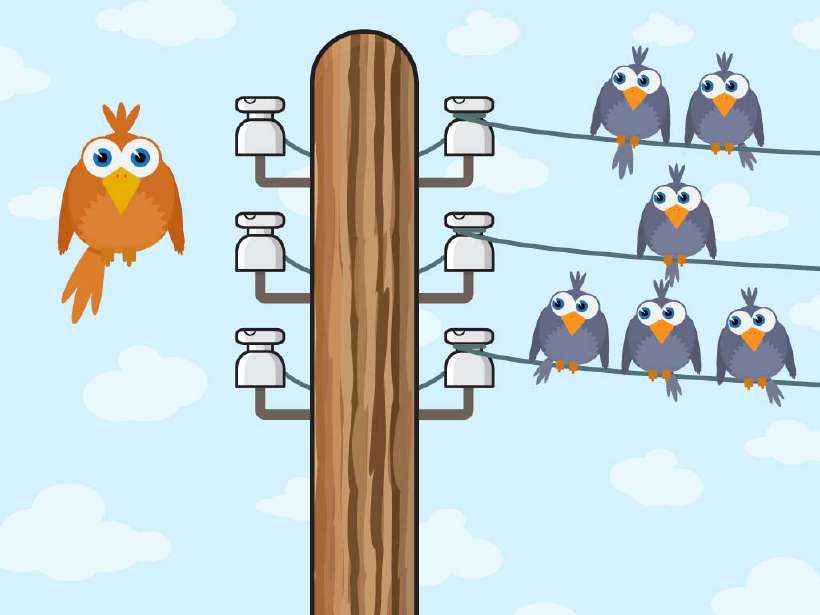Why don't Birds on a wire get a shock?
Home / Science for Kids / 5Ws & H For Kids / Why don't Birds on a wire get a shock?
Now how is that possible? The fact is, for a living creature to get a ‘shock’ there has to be a substantial flow of current through the body. However, there is barely any current running through the bird’s body for two reasons. Firstly, the bird not only forms a circuit with the wire, but it also offers a high resistance to current, so the current passes through the wire instead of the bird.
It’s a bit like this, would you prefer going on a smooth road or a road full of potholes? The answer is obvious and just like you, the current prefers taking the easier path. All objects offer some amount of resistance to the flow of current, depending on the material.

This is just one of the reasons why birds don’t get shock, however the more important reason why current does not pass through the bird is, there is barely any, if at all, voltage difference across the bird. Current flow is actually just the flow of minute charged particles that are invisible to the naked eye. These charged particles need an energy input in order for them to get transferred. The amount of energy needed to move the charges from one point to another is measured in terms of the potential difference between the two points.
A bird perched on high-tension wires has both its feet placed firmly on the same wire, so the net potential difference from one end of the bird to the other is, for all purposes, next to nil.
In order for current to flow through the bird, there must be a sizeable difference in voltage across the body. While the potential difference between the wire and Earth may be thousands of volts, the potential difference between the bird’s two feet is extremely tiny and so a very small current flows through the bird which can barely be registered.
![Why don't Birds on a wire get a shock? [Illustration by Shinod AP]](/media/5wh-192_1_hu270ae5824d933d3b7d92c4caa7abd0a9_7586_820x0_resize_q60_box.gif)
If the bird were to touch the wire and simultaneously another wire, it would receive a mild shock. On the other hand if it were to touch the wire and some other object connected to the ground, it would receive a deadly shock, the greater the potential difference, the greater is the current flow.
392 words |
4 minutes
Readability:
Grade 8 (13-14 year old children)
Based on Flesch–Kincaid readability scores
Filed under: 5ws and h
Tags: #birds, #particles, #resistance
You may also be interested in these:
Pretty bird no more
Elevator Physics
Why doesn't our stomach get digested?
Vanishing Vulture
Winter Guests